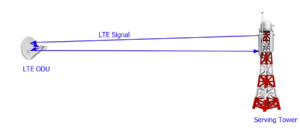Unconventional Out-of-Band Management using MikroTik LtAP mini-LTE kit and OpenVPN server
Welcome to the dynamic cosmos of networking and connectivity, where the quest for resilient yet budget-friendly solutions takes centre stage. Today, we’re not merely delving into the technical aspects; we’re embarking on a journey into the avant-garde of connectivity solutions – the fusion of the sleek MikroTik LtAP mini-LTE Kit and the powerful OpenVPN.
In this post, brace yourself to unveil the covert potential hidden within the MikroTik LtAP mini-LTE Kit. We’re not merely scratching the surface of its features; we’re unleashing its power and flexibility to provide solutions beyond its initial design. Get ready for a journey where the possibilities of this kit extend far beyond the expected.
What is Out-of-Band (OOB) Management? Now, picture this scenario: You’re overseeing a network device situated miles away from your headquarters. Through the wonders of remote protocols like SSH, you’ve been managing it seamlessly. Suddenly, the device throws a fit, and you are cut off. Oh no! Cue the need for a physical sprint to the device, employing console access to assess the damage – time wasted, money drained, and downtime soaring.
But hold on! What if I told you there’s a smoother way to confirm the device’s status without breaking a sweat? Yes, you guessed it right – Out-of-Band Management! It’s not just a term; it’s the networking world’s century-defining invention, saving you from the hassle of always needing physical access during failures a thing of the past.
While In-Band Management operates through the LAN using conventional remote access methods like SSH, web or Telnet, Out-of-Band Management offers a secure alternative to administering connected devices and IT assets without relying on the corporate LAN – through a separate connection.



